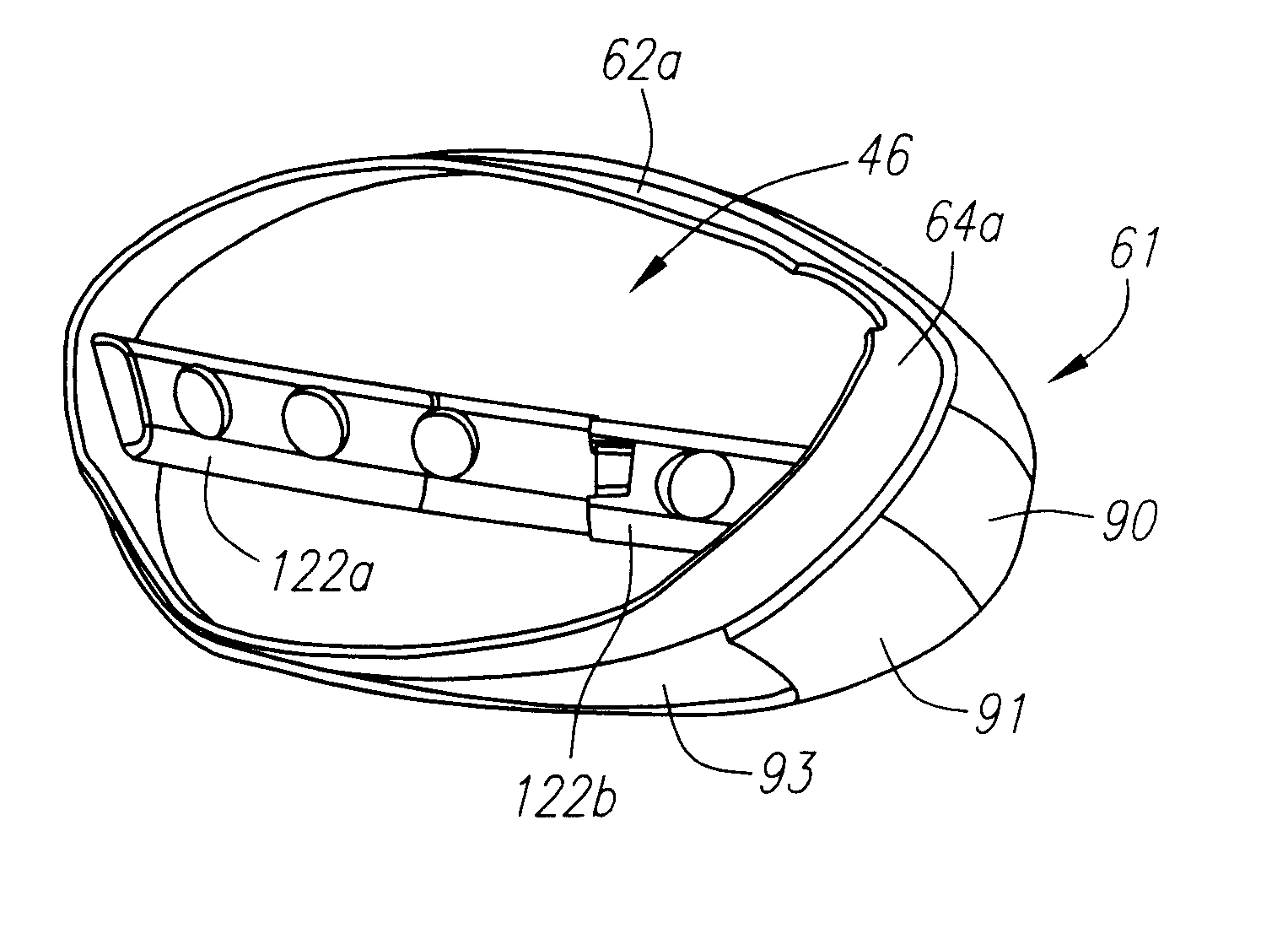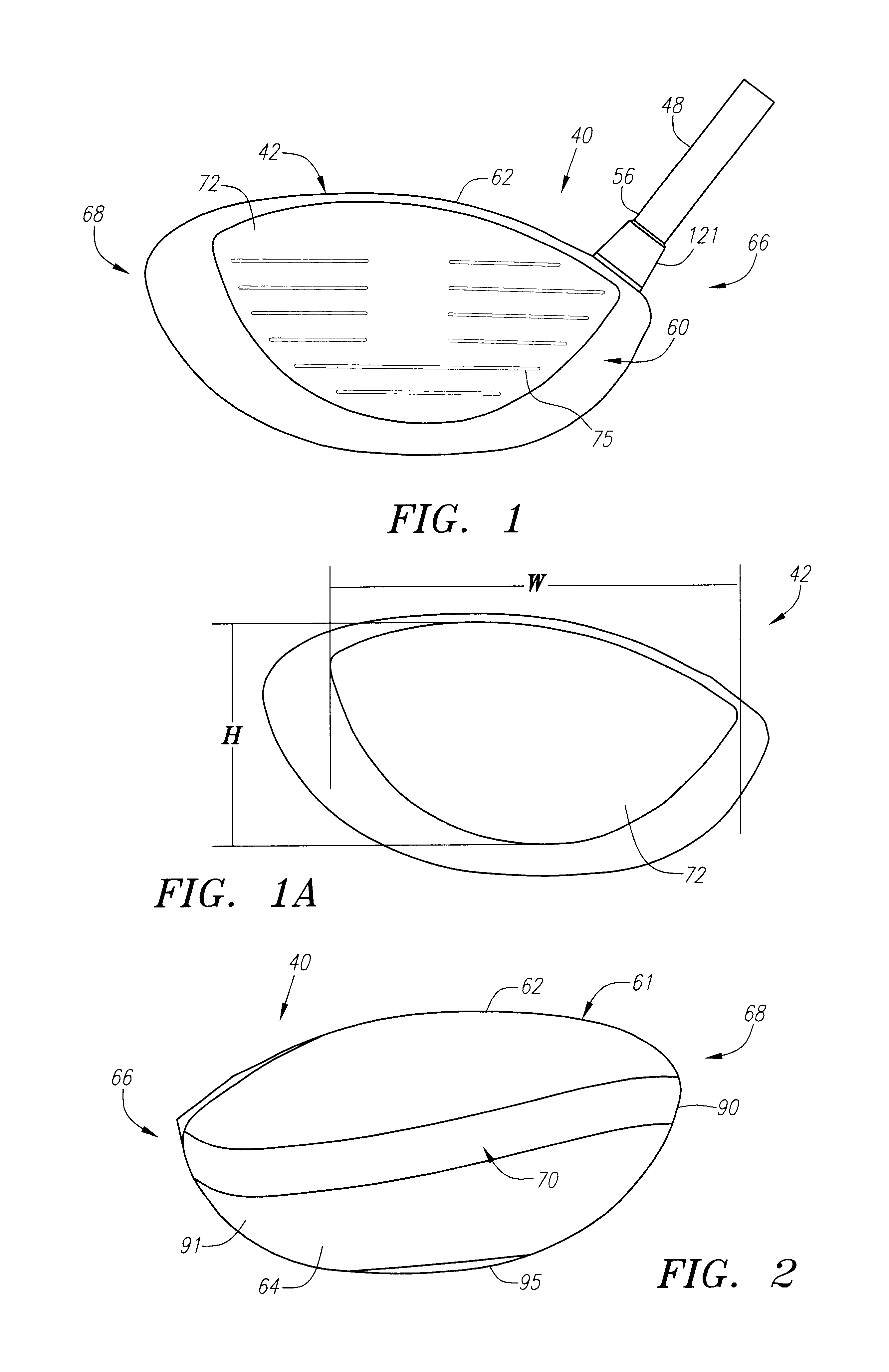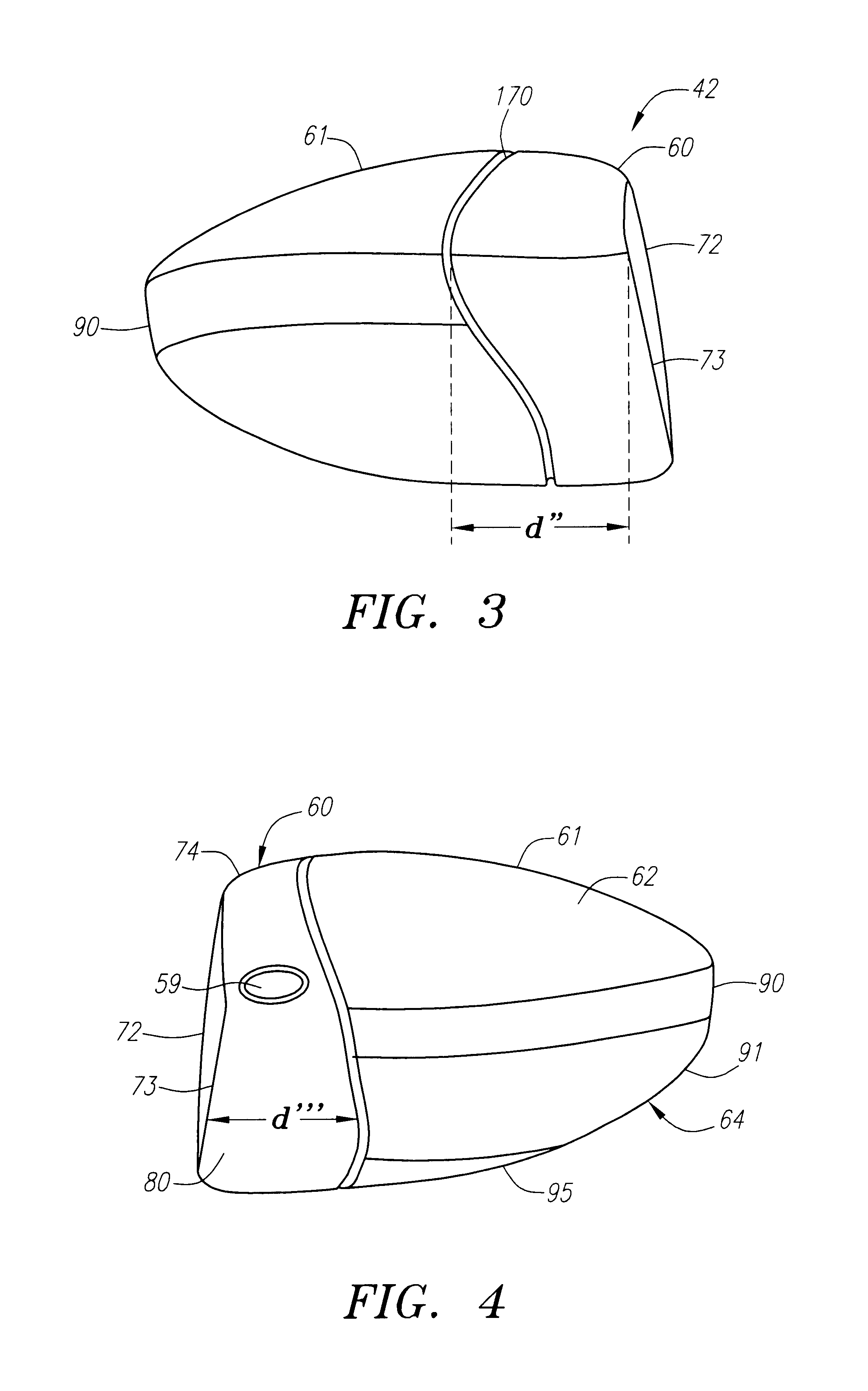Multiple material golf club head
a golf club head and multi-material technology, applied in the field of golf club heads, can solve the problems of increased energy transfer problems, increased deformation of golf balls, and energy loss
- Summary
- Abstract
- Description
- Claims
- Application Information
AI Technical Summary
Benefits of technology
Problems solved by technology
Method used
Image
Examples
Embodiment Construction
is a 430 cubic centimeter golf club head 42 with the total club weighing 270 grams. The face component 60 is composed of a cast titanium, Ti 6-4 material. The aft body 61 is composed of a plurality of plies of pre-preg. The golf club head 42 has a loft angle of eleven degrees and a lie of 54 degrees. The bulge radius is 11 inches and the roll radius is 10 inches. The vertical distance h of the club head of example 1 is 2.14 inches, and the distance w is 3.46 inches. Example 2 is a 510 cubic centimeter golf club head 42 with the total golf club weighing 285 grams. The face component 60 is composed of a forged titanium alloy material, Ti 10-2-3. The aft body 61 is composed of a plurality of plies of pre-preg. The bulge radius is 11 inches and the roll radius is 10 inches. The vertical distance h of the club head of example 2 is 2.54 inches, and the distance w is 3.9 inches. Example 3 is a 385 cubic centimeter golf club head 42 with the total golf club weighing 198 grams. The face comp...
PUM
| Property | Measurement | Unit |
|---|---|---|
| thickness | aaaaa | aaaaa |
| thickness | aaaaa | aaaaa |
| thickness | aaaaa | aaaaa |
Abstract
Description
Claims
Application Information
 Login to View More
Login to View More - R&D
- Intellectual Property
- Life Sciences
- Materials
- Tech Scout
- Unparalleled Data Quality
- Higher Quality Content
- 60% Fewer Hallucinations
Browse by: Latest US Patents, China's latest patents, Technical Efficacy Thesaurus, Application Domain, Technology Topic, Popular Technical Reports.
© 2025 PatSnap. All rights reserved.Legal|Privacy policy|Modern Slavery Act Transparency Statement|Sitemap|About US| Contact US: help@patsnap.com



